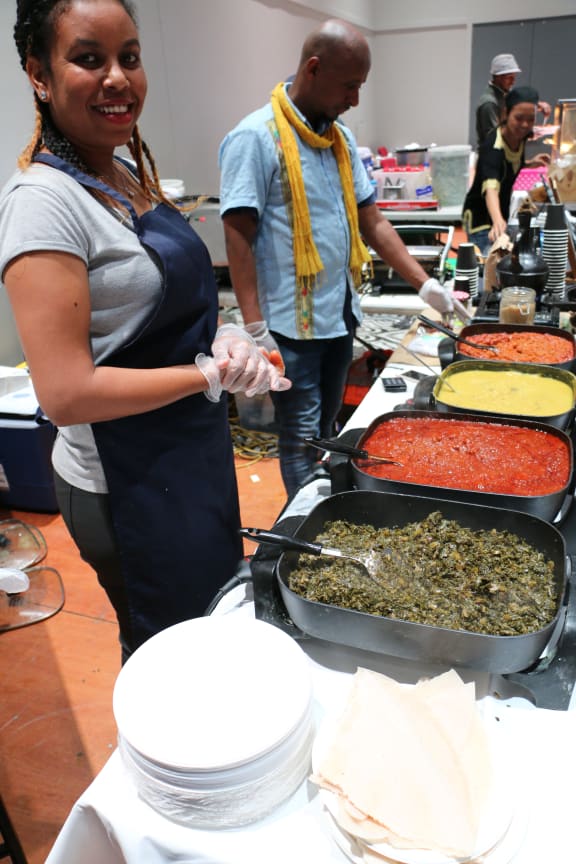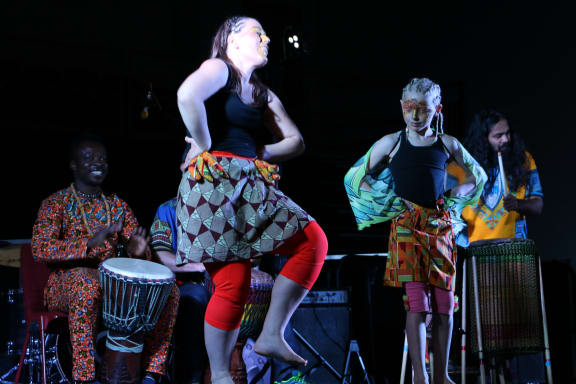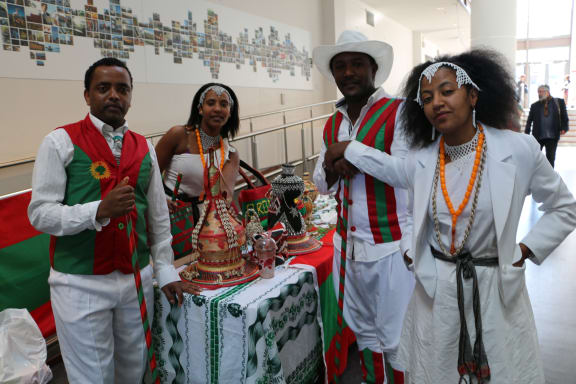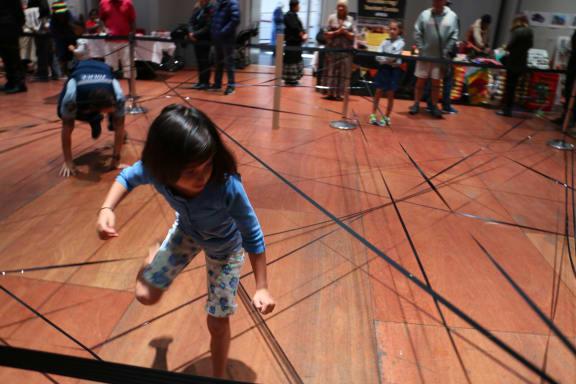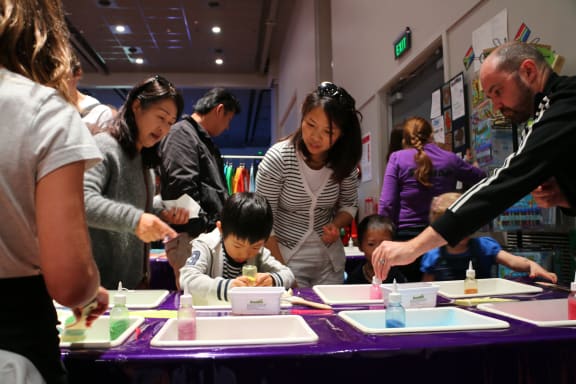Noodle soups are a staple of Asian cuisine, and with winter well and truly set in, many of us will turn to a comforting bowl of ramen, laksa or pho - rather than good ole tomato soup - to warm us up.
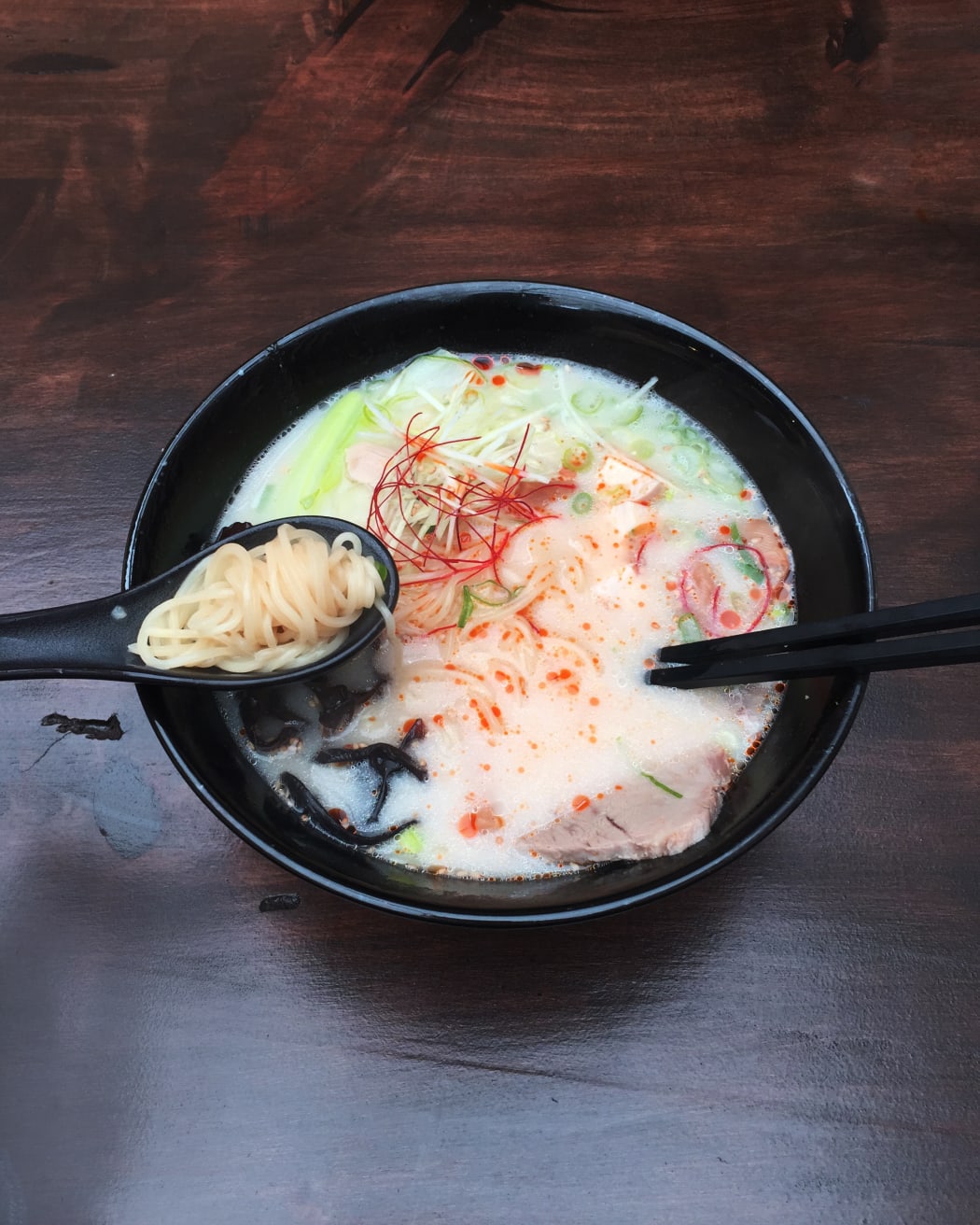
Bowl of ramen from Ramen Takara Photo: RNZ
Our immigrant communities have revolutionised the traditional Kiwi diet of roast lamb, pies and lamingtons, and these days, when we think about getting takeaways, our options aren't just limited to fish and chips - many of us have Malaysian, Chinese, Japanese or Vietnamese eateries just down the road.
Across Asia, most noodle soups are a variation on the basic recipe of noodles, broth, vegetables and spices.
But not all noodle soups are created equal.
Malaysia’s assam laksa
Tee Phee is the woman behind Wellington's popular Malaysian restaurant, Little Penang.
Specialising in hawker's food from Penang, Tee's restaurant on Dixon Street serves authentic Malaysian dishes like mee goreng, nasi lemak and chay koay teow. Alongside their regular menu, there is a different special each day of the week. And on Thursdays and Saturdays, it's assam laksa - a pungent, spicy, fishy noodle soup.
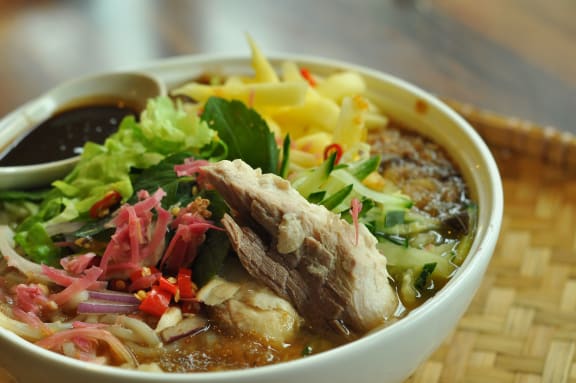
Assam laksa at Little Penang, Wellington Photo: Supplied/Yong Le Chong
“It’s cooked with a fish base. In Malaysia we use mackerel, which is a bit too strong, fishy, and here we just use fresh mullet.
“We boil the fish and get the stock out of it. We use tamarind and a medley of spices - like more than KFC".
Rice noodles and big pieces of fresh fish also go into the soup. On top is a colourful selection of fresh salad vegetables, like pineapple and cucumber. It’s finished off with ginger torch flower and prawn paste.
Tee says assam laksa is very different to the curry laksa you might see on the menu at other Malaysian restaurants.
“I think the word laksa is quite loosely used in the sense that that’s why we are very careful with customers who come in and ask for assam laksa, we just explain to them that’s not the one with the coconut milk … they are two entirely different dishes.”
“It just blows your mind, if you’re not used to it, but if you are used to it, this is the kind of taste that wakes you up.”
Japan’s ramen
Ramen is a steaming hot bowl of noodle soup, with toppings like pork, spring onion, egg and bamboo shoot.
It’s hugely popular in Japan, where there’s a ramen shop on almost every street corner.
Yuki Yamaguchi-Lewin learned how to make a good bowl of ramen from her father, who ran his own ramen shop back in Japan, at the foot of Mount Fuji. She runs Auckland restaurant Ramen Takara, which has branches in Ponsonby and the North Shore.
From start to finish, it takes about 10 hours to make a good bowl of ramen - you’ve got to have a good broth, good noodles and good toppings.
“Ramen is like an art,” Yuki says.
“To make a good bowl of ramen, we make fresh noodles every day, and we make a big pot of broth.”
The broths are usually pork or chicken-based. Unlike Malaysia’s assam laksa, there's no prawn paste, ginger torch flower or salad vegetables in sight.
But depending on where you go in Japan, Yuki says you'll come across different types of ramen.
Hokkaido - in the cold north - is famous for its warming, spicy miso ramen. Around Tokyo, soy-based shoyu ramen is popular. But most famous of all is tonkotsu ramen, with its cloudy pork broth, which hails from Kyushu, in the south.
“So different regions, different flavours, but all ramen tastes good,” she says.
Vietnam’s pho
In Vietnam, noodle soups aren't just a winter dish - they're eaten all year around, and at all times of the day, even breakfast.
Nikki Chung was just a toddler when she and her parents came to New Zealand in 1980 from South Vietnam. She runs three takeaway-style Vietnamese eateries in Wellington, called Nam D. Nikki learned the art of making pho from her mum.
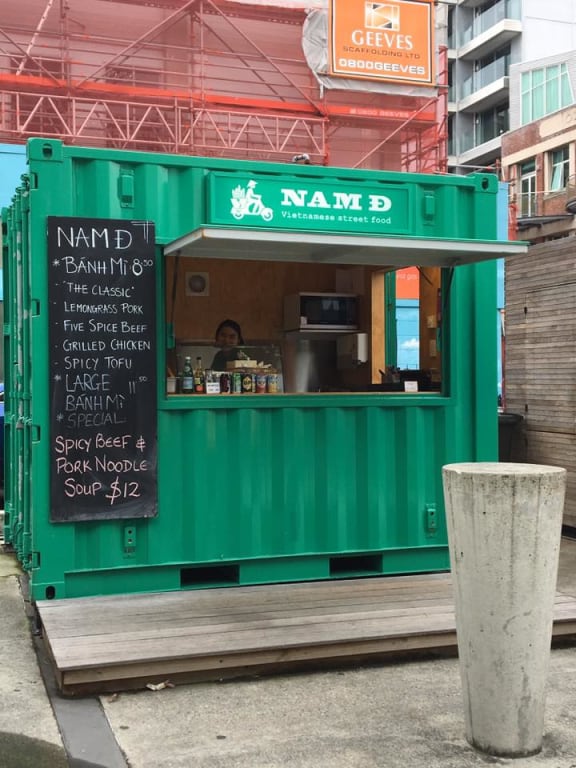
Nam D pop-up takeaway shop, one of three stores in Wellington Photo: Supplied
“It’s made of just really beautiful, clean stock. The most popular and traditional one is beef noodle soup, pho bo,” Nikki says.
A good stock can take about six hours to prepare - boiling the bones to extract all the flavour.
But once that's done, the rest is pretty easy: boil the rice noodles, put the rare beef in a bowl, pour the hot stock over it and add fresh herbs - like mint and corriander - and lime. If you want a bit of a kick, you can add fresh chilli or sriracha.
“To us, we love the balance of salty, to sweet, to sour,” Nikki says.
So how's it different to those other noodle soups?
“I think our one is just a simple, very clean-flavoured stock. Very little is added to it. It’s just all the side condiments that we are known for - all the fresh herbs and side condiments that you put into your dish.”




